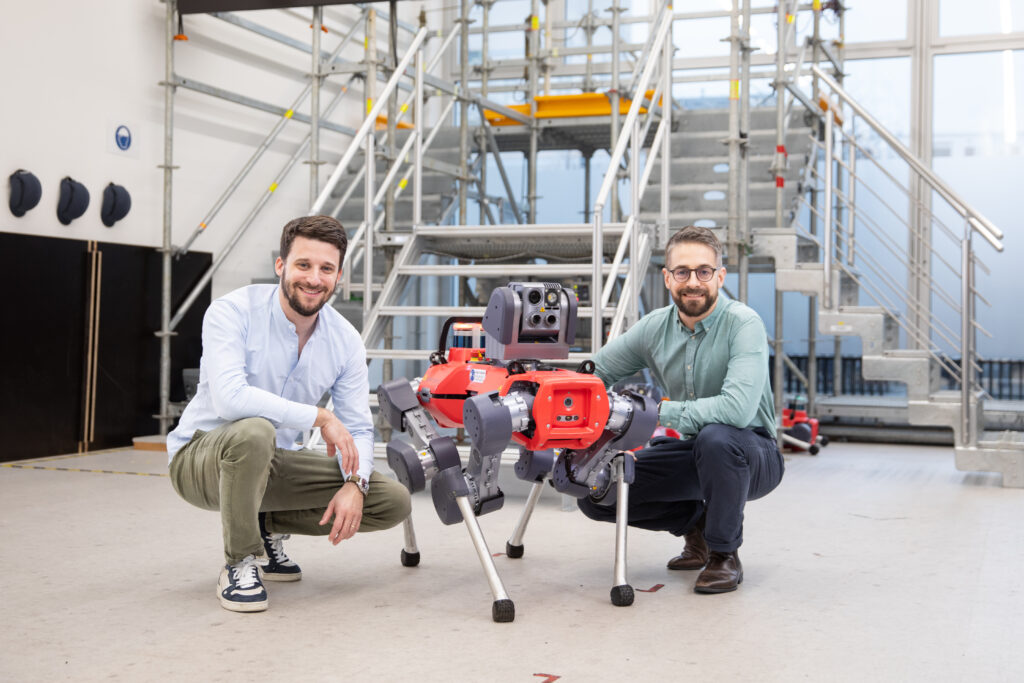
Industries and services across the globe are being reshaped by the transformative technologies of artificial intelligence, neural networks, and machine learning. But what will this new AI industry — and the ecosystem around it — look like? Qualcomm Ventures began investing in China’s AI sector more than five years ago. That experience has given us a close-up, moment-by-moment perspective on how AI has quickly become a central public and sector focus, resulting in a robust AI ecosystem. We have witnessed China’s AI industry grow from almost nothing in 2014 to over $10 billion in 2020.
While the pace of this growth has been unprecedented, AI has followed a familiar trajectory known as the Gartner curve. Beginning with a first phase of technological innovation, followed by early adoption in specific verticals, and finally, the emergence of platforms that allow massive and widespread adoption across industries and sectors. Qualcomm Ventures has put those deep insights to work in our investment strategy which has been to invest early — one to two years ahead of peer venture capital firms — and typically at early financing stages, which have generated healthy returns. Having closely observed and furthered AI’s development in China, we’ve seen how these three phases—core technologies, verticals, and platforms—have defined the process shaping the maturing AI industry sector in China and can provide insight into how AI industries could evolve in other geographies.
Core Tech: The foundation
China’s AI sector grew from strong fundamentals: startups whose core AI technologies promise to reshape entire industries. Companies that were early to master these core capabilities were the ones best positioned to serve demand—or able to create it — for powerful applications of AI in an increasingly wide range of sectors.
One of Qualcomm Ventures’ portfolio companies, Elevoc, was built around a core competency, sound processing, and has evolved into a leader in its vertical. Using Computational Auditory Scene Analysis (CASA), which leverages deep learning to analyze and separate sound in the manner of the human brain, it provides voice enhancement and voice-interaction solutions for smartphones, headphones, laptops, wearables, automobiles, and VoIP.
When we first invested in Elevoc three years ago, the company was a pure tech startup in search of a business application. Now, after three years, their solutions are widely adopted by top-tier customers like Lenovo, OPPO, Vivo, and Xiaomi. And in 2018, when Qualcomm Technologies, Inc. announced its Snapdragon 855 Mobile Platform, Elevoc was one of the independent software vendors who collaborated on the 4th generation Qualcomm Artificial Intelligence Engine.
How can investors identify the entrepreneurs adding new building blocks to the industry before business models for the technology and services are developed? Our approach has been to look for firms with strong leadership and innovative technology. In addition, we look for companies with a clear lead on their current competitors developing a technology that is not likely to be replaced in at least the next three years and has the potential to be applied and create value in multiple business scenarios. Such firms, we have seen, are well-positioned to grow and lead an industry that must evolve as it matures.
Verticals: The future of applied AI
AI has evolved in China into a technology that is reshaping virtually every industry, from manufacturing and logistics to hospitality and food service. With a deep well of core technology developers, robust platforms, and sophisticated edge computing, entrepreneurs now have the opportunity to quickly customize AI solutions for each industry’s needs by transforming technical advantages into cost advantages.
Our approach to investing has been to identify sectors that are large enough to support an innovative startup as well as have a use case that will solve an industry demand that will create concrete business value. As in the case with core technology firms, solid leadership is crucial: a management team needs both deep sector know-how and experience to identify these industry-wide opportunities and engineering capacity for the deployment of novel solutions.
For example, DeepVision, a company in which we invested in 2019, developed high-resolution online production-line inspection solutions for the ball bearing manufacturing industry. Over that time, the technology they built from scratch is now widely accepted by the global leaders in the sector. But it’s not stopping there: Having developed that niche, the company’s leadership is adapting its technology to the massive textile, battery, and gear-manufacturing industries.
Zongmu Tech, a firm that we backed in 2019, is one of the country’s largest providers of advanced driver-assistance systems (ADAS) in applications such as 360-degree surround view, automatic parking assistance (APA), and autonomous valet parking (AVP). The firm now supplies both the rapidly maturing Chinese autonomous-vehicle sector and overseas carmakers with excellent AI algorithms, cutting-edge technologies, and full-stack automotive-grade designs and manufacturing. Zongmu has a strong strategic partnership with Qualcomm Incorporated and its affiliates, utilizing Qualcomm’s Snapdragon technology in its solutions.
Platforms: Across sectors and applications
When new technologies first emerge, developers often look for niche use cases that require high levels of customization. But once the technology is utilized across enough different applications, it tends to become more standardized, accelerating the pace of adoption to even more scenarios. This process is the foundation for the creation of new platform companies.
In a nation as engaged with the AI industry as China, the technology has quickly proven useful across industries, allowing new platform companies to build on top of core AI technologies by identifying new applications and matching new AI tools with new AI users. By providing a framework to identify use cases and scale at a low-cost, these platforms enable the fast-deployment of products for long-tail needs while coordinating the demand and supply sides.
Of course, not every new core technology or even well-developed vertical will produce a platform company. To identify those firms building new platforms in AI, we look for firms building the capability to quickly accumulate and distribute AI applications. In addition to proven business development and go-to-market capabilities, a key ingredient is a management team that understands the importance of standardizing their product to more efficiently serve multiple customers and industries.
A good example of this process in action and just how large these platforms can get is Extreme Vision, a company we first invested in in 2019. Besides being a provider of AI and computer-vision algorithms, it is also a massive AI distribution platform. Its leading algorithm training environment and application distribution channels serve more than 150,000 developers who have built algorithm applications for use in more than 30 industries. Extreme Vision no longer simply creates AI solutions; it has created a marketplace that catalyzes solutions by connecting AI with business intelligence, exponentially increasing the pace of innovation.
Platforms, by their nature, can also lower the barrier of entry for both technology creators and consumers by putting these new tools online, expanding the scope of the development community and the potential for their products. Just as the App Store and Google Play were integral to developing the iPhone and Android ecosystems, scaling AI tools can potentially reduce friction by speeding time to market, encouraging adoption, and increasing cost savings and benefits to the industry.
In conclusion, the basic shape of this three-step development offers a roadmap for what other geographies could experience in the effort to bring AI into reach for all — now and into the future. Furthermore, the widespread adoption of 5G will significantly restructure the entire system of sensing, computing, data transfer, and storage on which current AI applications rely.
We believe the convergence of AI and 5G capabilities will bring forth massive opportunities in China and other geographies, including the engineering of new core hardware technologies that allow neural networks with lower power consumption, photon and asynchronous chipsets, and software with more efficient algorithms. But our investment strategy will remain the same: identify the emergence of these three pillars—technologies, verticals, and platforms—that make up the backbone of China’s AI economy.



